Are you wondering why do ostriches dance?
Get ready to dive into the engrossing world of these tall creatures as you learn about their enchanting movements and mating habits. From rhythmic feathered footwork to alluring displays, these elaborate performances will amaze you.
On a previous overlanding trip to Africa, we stumbled across an interesting ostrich love scene in the Ngorongoro Crater.
Ostriches have a very intriguing way of breeding, so I thought I’d share with you some of the footage I took to immortalize the moment.
But first off, let’s talk about the major questions that revolve around the topic. In this article, you can find some of the most curious facts about ostrich courtship and the incredible lengths these birds go to when attracting a potential mate.
Ostrich Dance Meaning & Mating Facts
You may already know that ostriches are large, flightless birds with some interesting and weird animal traits.
But did you know that males perform seductive dances to attract females in the wild?
Here are some of the most captivating things to know about the ostrich mating ritual.
1. When do ostriches become sexually mature?
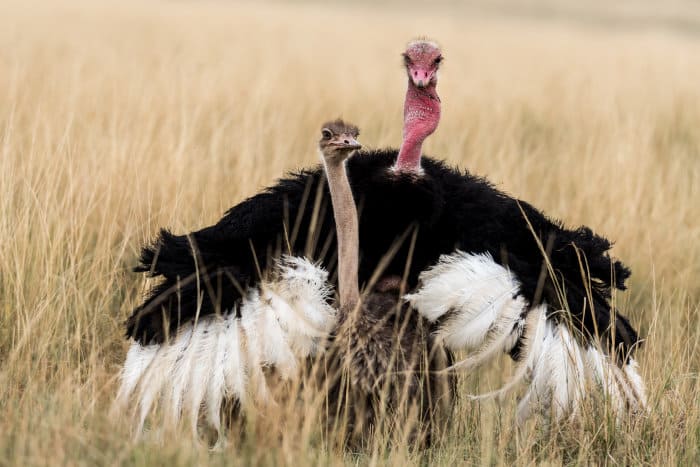
Sexual maturity for the common ostrich usually occurs between the ages of 2-4. Females, however, reach maturity approximately 6 months before their male partners and are generally ready to reproduce in their third year.
While the average age is 2-4 years, these magnificent creatures reach sexual maturity at a different time period. This depends on various factors, including genetics, nutrition, and environmental conditions.
It’s also important to note that although ostriches may reach sexual maturity at these ages, they may not start breeding immediately.
Some influential factors on their reproductive behavior include social hierarchy within a group or the availability of suitable mates.
2. Is there a specific breeding season for the ostrich?
While the breeding season may vary from one region to another, it typically occurs between the months of March and April and may end around September.
In this particular case, though, the footage you are about to see was taken in December, so you shouldn’t necessarily stick with what the textbook says! 🙂
NB: Ostriches are polygamous, so the male copulates with more than one female in the harem. For more information on polygamy animal behavior, click here.
3. How can you differentiate between male and female ostriches?

It is relatively easy to distinguish the two sexes. Males are black with gray necks, which become bright pink in color during the breeding season. They have predominantly white wings and a pale chestnut tail.
Females, on the other hand, have a paler brownish color.
Another visual cue to differentiate males from females is size. It’s no secret that the ostrich is a true giant among birds. In fact, it’s the biggest living bird in the world. Generally, males are larger than females and have more robust bodies.
Males showcase their majestic stature by reaching weights ranging from 100 to 130 kg. On average, male ostriches stand at towering heights of 2 to 2.75 meters.
While slightly smaller, female ostriches still possess an undeniable presence. Female ostriches weigh around 90 to 110 kg and measure an impressive 1.7 to 1.9 meters.
One of the major reasons for this sexual dimorphism is that female ostriches commonly lay their eggs during the day (and thus blend in nicely with their surrounding habitat).
On the other hand, males protect the eggs at night (and become almost undetectable when it is pitch black).
4. How many eggs can an ostrich lay?
Each female can lay 6-14 eggs, yet communal nests may have between 15 and 60 eggs altogether.
When the eggs are ready for incubation, the dominant female discards the eggs from the weaker females and normally keeps around 20 of them.
Many people are familiar with the striking ostrich egg’s appearance, as it is the largest of any living bird. These extraordinary eggs boast a sturdy shell and distinct elongated oval shape.
The sheer magnitude of an ostrich egg fills people with awe, reminding us of the incredible wonders found in the natural world. The shells are extremely thick, providing protection for the developing embryos inside.
The process of an ostrich laying an egg is a fascinating spectacle in itself. First, an ostrich prepares a nest, which is a shallow pit dug in the ground. Unlike other bird species, ostriches do not build elaborate nests in trees or on branches.
Then, the female starts the egg-laying process. She typically lays one egg every two days during the breeding season.
5. How long does an ostrich egg take to incubate?

Incubation lasts between 35 and 45 days. Both the male and dominant female take turns looking after the eggs.
An ostrich is one of the fastest animals in Africa, but you’re unlikely to find it running away from responsibility. Both male and female ostriches ensure the ideal conditions for embryos to develop.
The large, thick-shelled eggs require consistent temperatures of around 35 to 36.9°C for successful incubation.
Ostrich parents’ patience and dedication are put to the test as they carefully rotate the eggs, ensuring proper heat distribution. It is an amazing process that maximizes the chances of a healthy hatchling.
6. The courtship: ostrich mating dance
Why do ostriches dance? Males showcase their moves to attract females. Many refer to this as the “seduction dance”.
How do ostriches mate? The courtship looks a bit like a “ballet” dance and is very funny to watch!
When a male finds a suitable female, it sits on its hacks and starts waving its wings around and throwing its head from side to side.
The scene is often followed by a deep thumping sound, or he pumps up his neck and produces a loud booming noise.
The seduced female then walks with her head down and shakes her wings as a way to show her approval. Ultimately, the male approaches her, she sits down, and the mating process can commence.
7. Raising baby ostriches
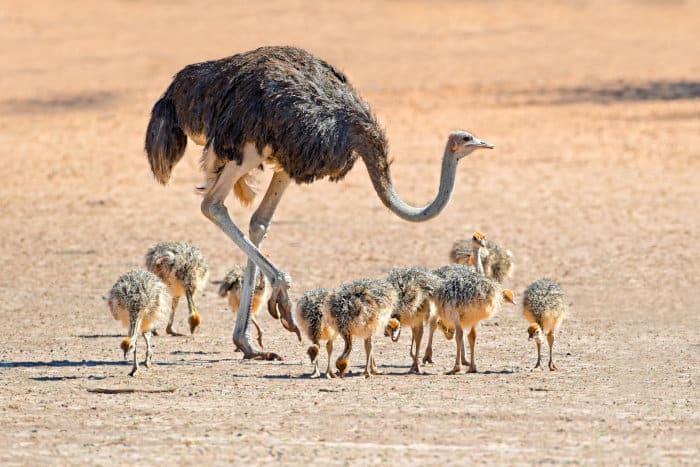
So what happens after male ostriches seduce females with their dance moves?
As ostriches are polygynous, a dominant male will mate with all female members in his harem. However, he only forms a bond with one, the dominant female.
When it comes to raising the offspring, it is the dominant female’s responsibility to nurture and protect the chicks.
After mating, the dominant female lays her eggs in a communal nest, which is typically an inconspicuous hollow dug into the ground.
The female ostriches in the group share the nest, but the dominant one will put her eggs in the center to ensure their survival.
The eggs positioned on the outer edges of the nest may not survive due to a lack of incubation or being pushed off.
The dominant female takes charge of the incubation. She carefully arranges the eggs and rotates them with her beak. This ensures that all sides of the eggs receive equal warmth.
During incubation, the dominant female guards the nest fiercely, protecting the eggs from potential threats. At the same time, the male defends the nest and maintains the overall safety of the group.
After the incubation period, ostrich chicks hatch from their eggs with downy feathers. The dominant female and male share the responsibility of raising the little ones. Within a few days, chicks leave the nest and stay close to their parent’s side for the first few months.
Both parents play a role in raising the chicks and defending them from predators. They actively guide young ostriches, teaching them vital survival skills like finding food, identifying potential threats, and navigating their surroundings.
Why Do Ostrich Dance? More Fun Facts About the Dancing Ostriches
Often, learning more leads to additional questions. So, to satisfy your curiosity, here are extra things to know about ostrich sex, eggs, and other compelling facts:
- Ostrich eggs can weigh up to 1.4 kg each and may feed as many as 12 people.
- One egg is equivalent to 20-24 chicken eggs.
- The eggshell is so thick that very few wild animals dare to eat them, apart from some vulture species (like the Egyptian vulture), hyenas, or jackals.
- In fact, the ostrich egg is so resistant that people can stand on it without damaging it.
- Ostriches are fast animals that can reach speeds of over 70 km/h for as long as 30 minutes. For more information, check out this article on how fast ostriches can run.
- They can weigh anything between 60 and 130 kg.
- Adult male ostriches receive the name “roosters” or “cocks”, whereas females earn the title of “hens”.
- You may know that ostriches defend their eggs, but did you know they have two-toed feet? They also boast one large toe with a sharp claw for defense.
- Their long legs are incredibly strong. These formidable weapons can deliver powerful kicks with the potential to seriously harm humans and predators.
- Ostriches have excellent eyesight, enabling them to spot predators from long distances. They have the largest eyes compared to other birds in the animal kingdom, measuring around 5 cm in diameter. In fact, an ostrich’s eye is even bigger than its brain!
Tell a Friend the Reason Behind Why Ostriches Dance
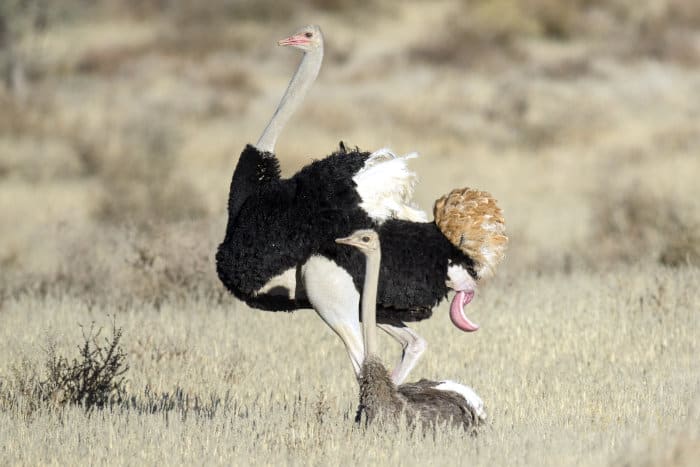
Now that you know more about the captivating dance of ostriches, why not share these facts with a friend? The secrets behind ostriches’ intricate moves and the art of wooing a female ostrich are truly fascinating.
The unique bond between males and females is one of the wonders of the animal kingdom. If you want to see dancing ostriches in person, plan an African safari and prepare for an adventure of a lifetime!

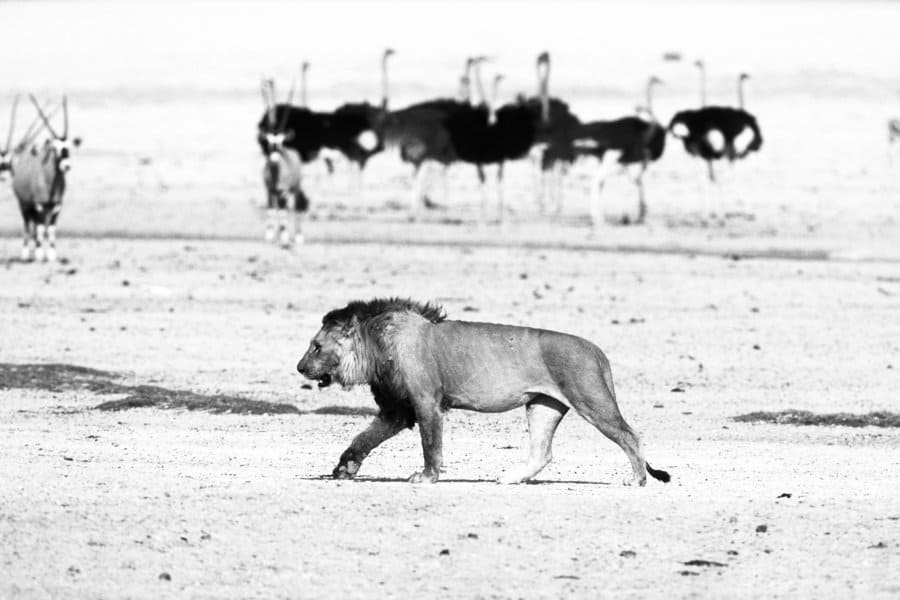
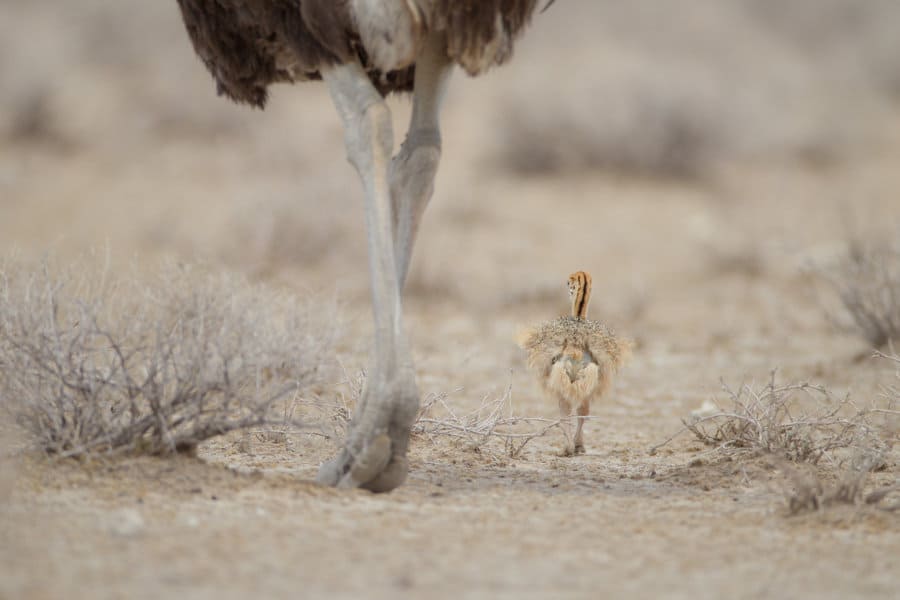

I think the mating is FUNNY!!!!!!